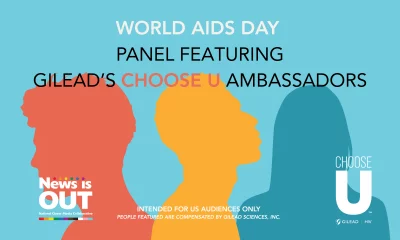a&e features
Larry Kramer’s magnum opus
On the eve of his 80th birthday, author talks new novel, Supreme Court and more
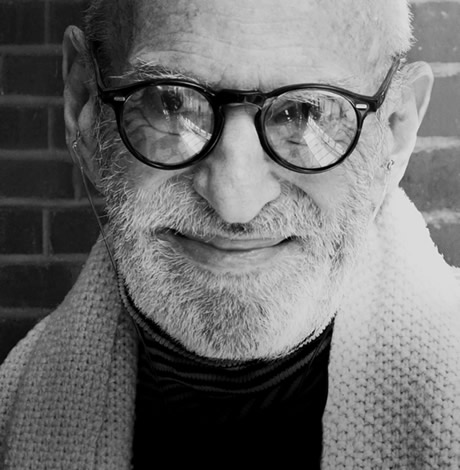
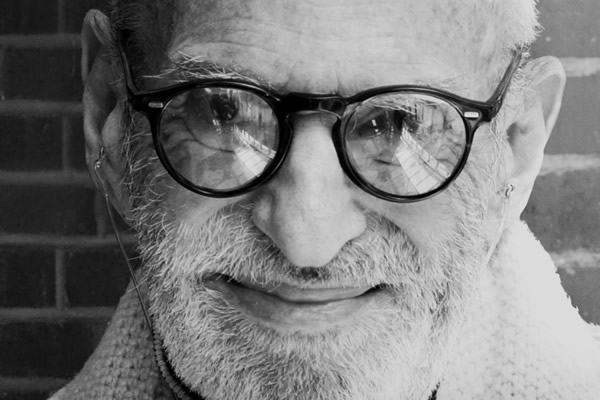
Larry Kramer plans to celebrate his birthday next month by ‘staying alive’ and ‘continue writing.’ (Photo by Jean Carlomusto; courtesy Farrar Straus Giroux)
Larry Kramer is up front about his frailties. Having “almost died three times,” and freely admitting to “not being so mobile,” he also tells a publicist to warn me he’s hard of hearing and a phone interview may be tough. He’s game to try, though.
Unfortunately, it didn’t work out and so after a couple of questions, we opt for an e-mail exchange. It’s not nearly the death knell to friendly sparring I fear. He has his answers back in about 20 minutes and answers several rounds of follow-ups quickly and without grumble.
The occasion? The publication of his new novel “The American People, Vol. 1: Search for My Heart,” which Farrar, Straus and Giroux published in April. It’s a behemoth —nearly 800 pages that tells variously of prehistoric monkeys, the Puritans, the American Revolution, the Civil War and also the abundant — in Kramer’s vision — homosexual proclivities of the U.S. Founding Fathers with a dizzying cast that includes Washington, Hamilton, Lincoln and even John Wilkes Booth.
Kramer, a D.C. native, is widely known for his groundbreaking and searing play “The Normal Heart,” adapted into an HBO Emmy-winning film last year, and other works such as the novel “Faggots” (1978) and his Oscar-nominated screenplay of “Women in Love.” A pioneering AIDS activist, he cofounded the Gay Men’s Health Crisis in 1982 and founded ACT-UP in 1987. He turns 80 next month and lives in New York’s Greenwich Village with his husband, David Webster (they wed in 2013) and their Cairn Terrier, Charlie, a rescue dog Kramer, always a dog person, says is “very good natured.” He ends our session by admonishing me via e-mail to “be sure to put something in about how much you loved ‘The American People’ and everyone should rush out and buy it and read it immediately!” It is not a stretch to accommodate this request.
WASHINGTON BLADE: Is it fair to say your book is a take on “how it might have happened” on issues of gay Americans, HIV and the Founding Fathers?
LARRY KRAMER: No. I am saying that I think this all did happen. I wanted to write a history of our people.
BLADE: Do you feel AIDS was started on purpose by homophobic German scientists?
KRAMER: No! I am saying that the AIDS virus has been with us since our country started, centuries ago.
BLADE: The New York Times review says your book suggests that “gay men have been with us long before homosexuality had a name and it is past time we extend to these men our historical sympathy and imagination.” Is that a fair estimation?
KRAMER: Of course, although I have never had a good review from the New York Times for anything!
BLADE: Did you envision the book as having such scale at the outset?
KRAMER: Yes. I was striving to write a “big book.” The technical problems interested me. I’ve written plays, movies, essays, a shorter novel. I wanted to see how far I could stretch myself. As I love to write, it’s been an exciting, challenging journey.
BLADE: What was the hardest part of the process? Did you hit any artistic brick walls along the way?
KRAMER: The hardest part was trying to figure out what makes a reader read such a long and complicated book that tells many stories and has a huge cast of characters.
BLADE: You’ve spoken of applying gaydar to historical matters. How fair in general do you feel that is or did it matter for your purposes?
KRAMER: I do not think the gay community is plugged in enough to their radar, so I tried to do it for them.
BLADE: In the modern day, much gaydar has been directed at former U.S. Rep. Aaron Schock (R-Ind). It sounds as though he had transparency issues regardless of whether he’s gay or straight, but is this kind of speculation of his being gay warranted?
KRAMER: Who gives a shit about “speculation” and whether it’s warranted or not? That’s the coward’s way out.
BLADE: Art, history and autobiography are always blurred in your work with characters like Ned Weeks (“The Normal Heart”) or Fred Lemish (“Faggots” and “The American People”). What is accomplished either historically or artistically by taking this approach?
KRAMER: A writer has one great subject to write about, his own life. My life has had many rivers, lived by many Larry Kramers.
BLADE: How’s volume two of “The American People” coming? About what percentage is done?
KRAMER: I have a rough draft but it’s very rough.
BLADE: You’ve taken on the possible homosexual proclivities of the Founding Fathers. Is there a point where similar approaches might be unfair or too obscured by history to justify? Any thoughts on those who assume, for instance, David and Jonathan in the Old Testament were lovers?
KRAMER: Having a strong opinion does not need the justification you are speaking about. No history of gay people exists, which is why I am trying to write one.
BLADE: But at any point in writing “American People,” did you feel you were on shaky ground? Isn’t it relatively easy to slap a gay nametag on a historical figure? What purpose is served in doing this beyond crafting entertaining fiction? Obviously it appears you had more in mind than that.
KRAMER: You miss the whole point of the book if you think I just made up these gay historical figures. I certainly was not out to craft entertaining fiction, but to instruct our people in their history. The only “shaky ground” was my concern people would not take seriously what I was telling them. Interesting that the great reviews arriving are from gay critics and the nasty ones are from straights!
BLADE: You’ve spoken often of the virtues of anger. Are you bitter? If so, is this a negative emotion?
KRAMER: I am not bitter. I am angry. Anger is a wonderful motivator for me!
BLADE: How old were you when you left Washington, D.C.?
KRAMER: I went off to Yale when I was 18. I still go back to see friends.
BLADE: Predictions for the Supreme Court gay case argued last week? If we win there, will we have won overall?
KRAMER: We will have won the right to marry. We have not yet won equality or a cure to AIDS.
BLADE: You’ve been critical of so many approaches to activism from HRC to Frank Kameny and beyond over the years. But could we have gotten to the Supreme Court solely using ACT-UP-style approaches? Couldn’t a variety of approaches have helped us in the long run?
KRAMER: Who says these kind of tactics were not used to help win marriage? I don’t remember criticizing Frank.
BLADE: Didn’t you feel Frank and some others spent too much time looking back?
KRAMER: Yes, I did say that.
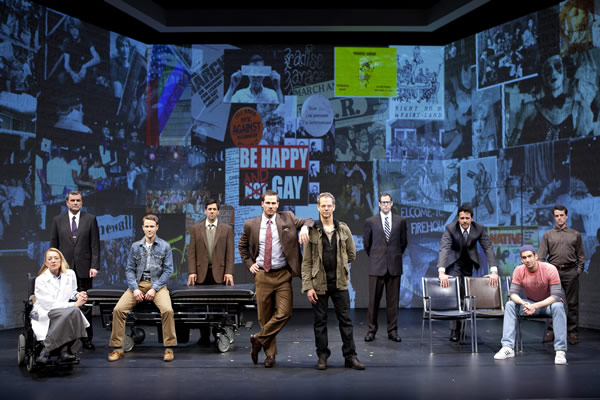
The cast of Arena Stage’s 2012 production of ‘The Normal Heart.’ (Photo courtesy Arena)
BLADE: You told the Advocate recently you are working on a “Normal Heart” sequel, but didn’t you do that already with “Destiny of Me”? Is this another work?
KRAMER: I am working on a sequel to the HBO movie, which was a big success for them. But it has not been announced yet until they approve my screenplay and whether Ryan Murphy is free to direct it. “The destiny of Me” was more a prequel than a sequel.
BLADE: Were you overall pleased with how the HBO adaptation turned out?
KRAMER: Very much so. I loved working with Ryan and we had such a great cast, Mark Ruffalo, Julia Roberts, Jim Parsons, all of whom we want to use in this sequel.
BLADE: Any thoughts on Armistead Maupin or the late Paul Monette (other gay writers of note)?
KRAMER: Paul was a dear friend and I am friendly with Armistead and I admire their work. I know many of the gay writers today and feel uncomfortable commenting on their work.
BLADE: Did you see the 2012 “Normal Heart” production at Arena Stage in Washington? Any thoughts?
KRAMER: I loved what Arena did. It was especially moving to me because when I was a kid, I went to see many of their productions in that small remodeled old movie theater on New York Avenue.
BLADE: How long have you been with David? Once you recovered, how did it feel to be married?
KRAMER: I first started dating David in the mid-‘60s. We dated for many years but he didn’t want to be pinned down. We finally got together permanently in 1995 or so and got married just a year or so ago. I promptly got very sick and spent almost a year in and out of hospitals. He saved my life several times when doctors were not helping; he found the right ones. It is certainly not the marriage one wanted to have, lover and caregiver. His own career as an architect has suffered as he worries for me. We have both certainly been put to the test and it has brought us even closer together.
BLADE: Has he read “The American People”? If so, what did he say?
KRAMER: He was one of the first people who read the earliest draft. He has a great memory of what and who I’ve written about, which is invaluable. He has always been a big fan, even of ‘Faggots,’ which is about our earlier go-round. He’s the dinky character who breaks Fred’s heart.
BLADE: Plans for your 80th birthday?
KRAMER: To carry on writing and staying alive!
BLADE: Barney Frank said this in his recent memoir: “If you care deeply about an issue and are engaged in group activity on its behalf that is fun and inspiring and heightens your sense of solidarity with others, you are almost certainly not doing your cause any good.” Do you agree?
KRAMER: Joseph Papp, who produced the original “Normal Heart” at the Public Theater said much the same thing to me, to wit: “If you haven’t offended someone, then you haven’t done something right.”
a&e features
Local, last-minute holiday gift ideas
Celebrate the season while supporting area businesses
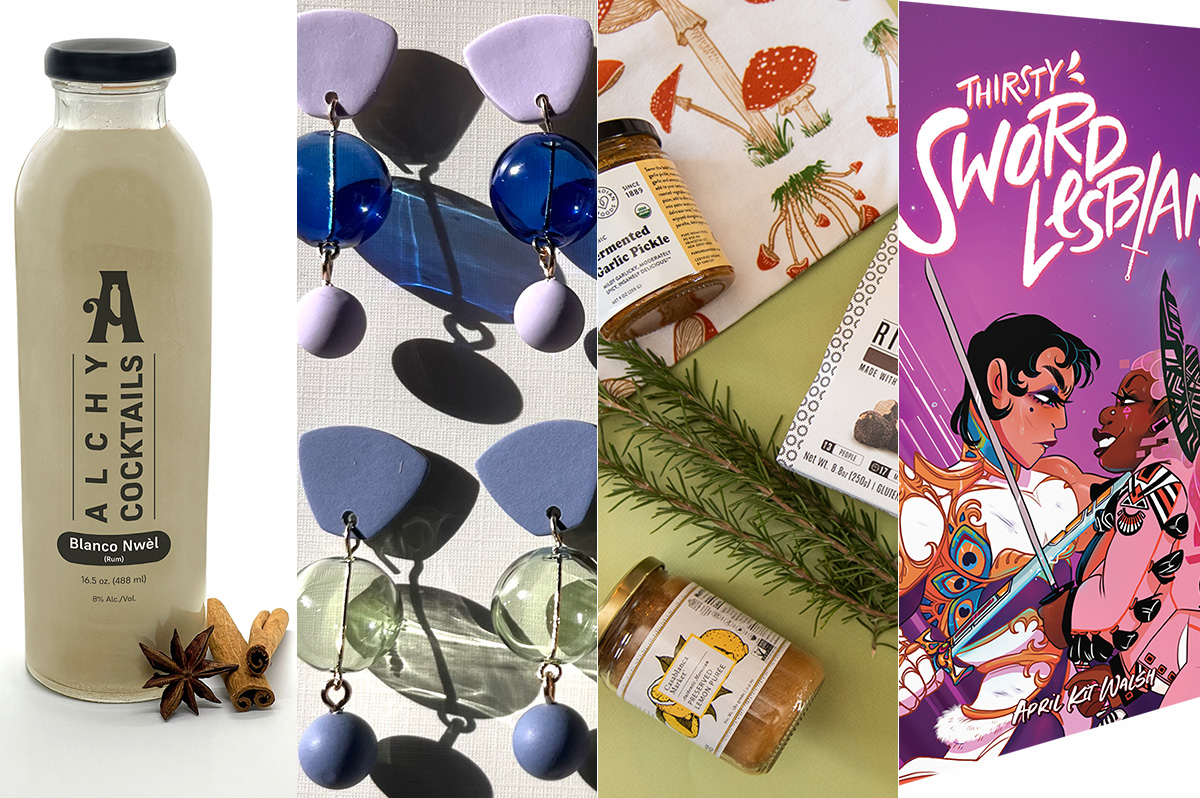
The DowntownDC Holiday Market is bustling. Union Station is decked out with its annual Christmas tree. Washingtonians have wrapped their houses and apartment balconies with festive lights and holiday decorations. The holiday season is here. And with stockings to fill and empty space under the tree, Washington’s local shops and artists have plenty to offer.
Show your LGBTQ and D.C. pride with the Washington Blade’s annual holiday gift guide.
To embrace the holiday buzz: The Blanco Nwèl cocktail from Alchy Cocktails. This Caribbean eggnog is one of Alchy Cocktail’s seasonal holiday cocktails. The flavor profile is similar to coquito, a traditional Puerto Rican Christmas drink with a coconut base. As a queer and Caribbean-owned business, Alchy Cocktails has been based out of Washington since 2021. Blanco Nwèl is available in both cocktail ($24) and mocktail ($12) online and at a variety of holiday markets, including the Tingey Plaza Holiday Market, the Flea Market at Eastern Market, Union Station’s Main Hall Holiday Market, and more. ($24)
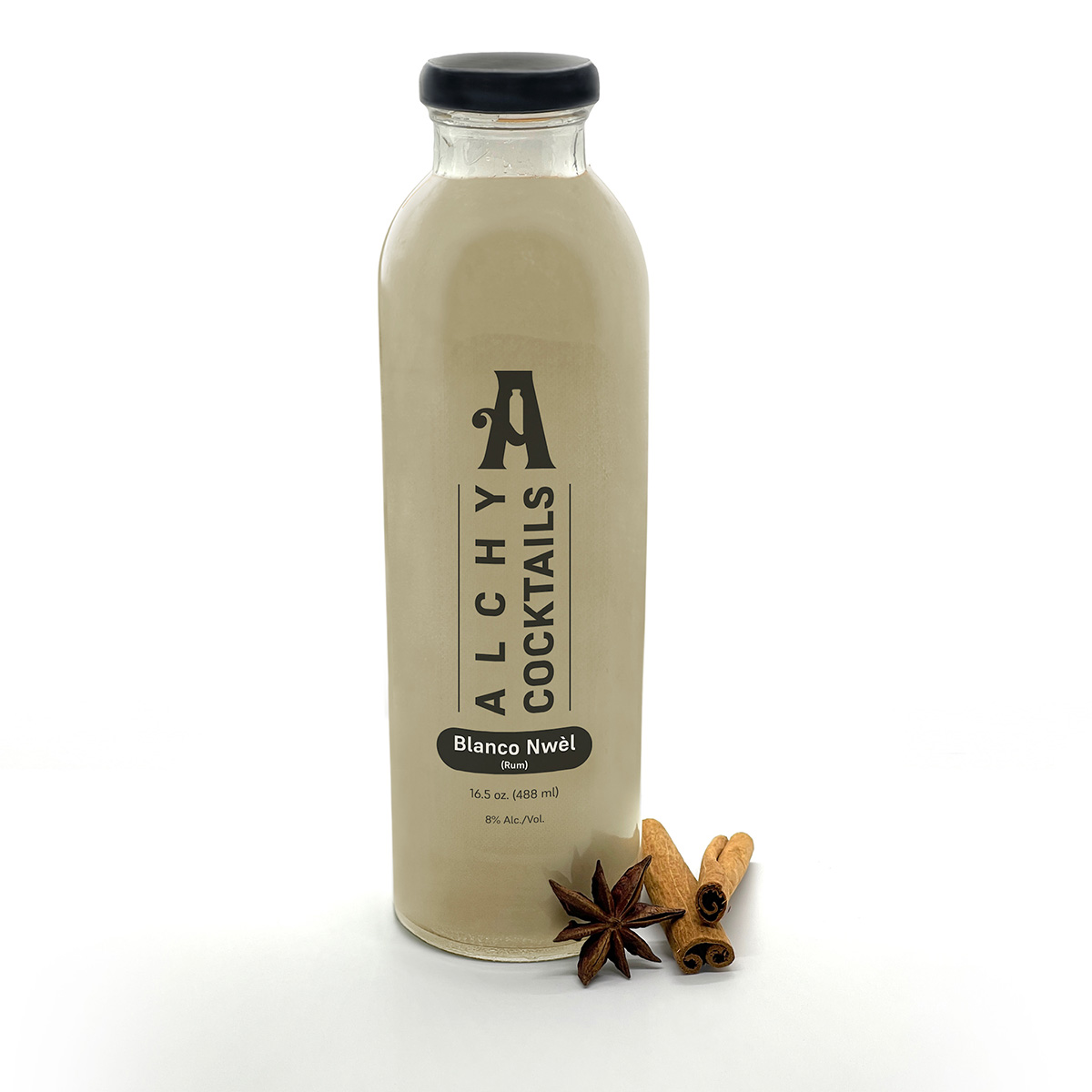
A spicy bite: Gordy’s Cajun Okra from Salt and Sundry. These spicy, tangy pickles pull on Southern Cajun-style flavors, packing a punch with paprika, cayenne, and more. Gordy’s is an LGBTQ-owned and Washington-based brand, making this gift an opportunity to support a local LGBTQ business straight from the jar. This pantry staple is available on Salt & Sundry’s website and at its locations in Union Market, Logan Circle, and its Georgetown holiday pop-up store. ($14)
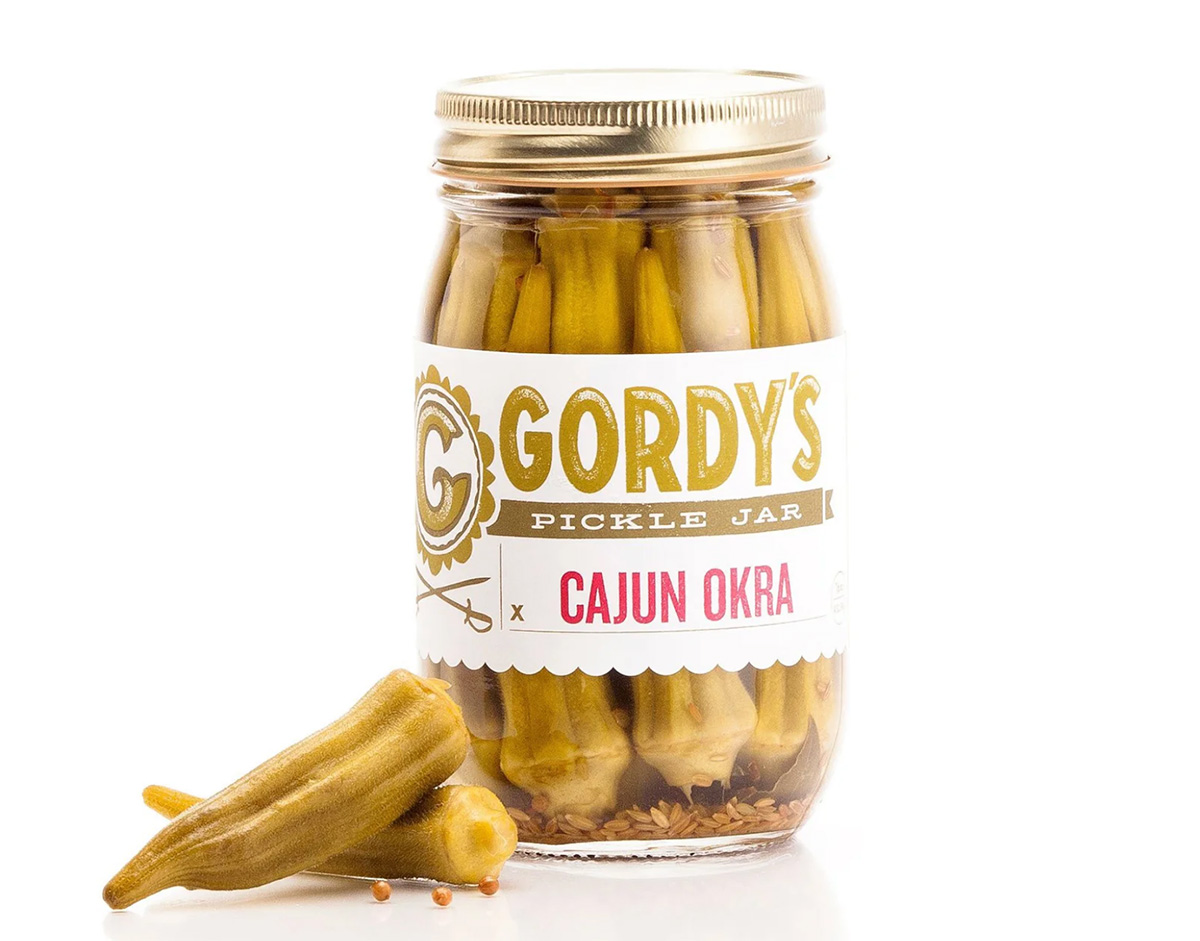

To celebrate Washington pride: The DC Landmark Tote Bag from The Neighborgoods. Native Washingtonians, visitors, friends and family alike will find something to love about this Washington-themed tote bag. Food trucks, the 9:30 Club, the Metro logo and pandas from the National Zoo are just some of the city’s landmarks depicted across the tote in a red, white, and blue color palette. The tote is a part of the DC Landmarks collection, which donates 10 percent of its sales to the American Civil Liberties Union. The Neighborgoods itself is a local, woman-owned business built out of a passion for screen-printing in 2013. The 100 percent cotton canvas tote is for sale online or at the DowntownDC Holiday Market. ($22)
To give friends and family their flowers: The Flowers Bandana from All Very Goods. This 100 percent cotton bandana was designed in Washington and hand printed in India. Its uniqueness comes in being covered with the faces of Black women, representing a “love letter to all women but especially Black women,” according to All Very Goods. The Black woman-owned and operated business, based out of Northwest Washington, has a mission to celebrate diversity and representation through its products. The bandana intends to give Black women their “flowers.” The Flowers bandana is available for purchase online. ($24)

To unlock culinary creativity: The Curious Chef Gift Collection from Each Peach Market. This customizable collection of kitchen oddities — ranging from tinned fish to chili oil — is a quirky gift for the most inventive chefs. The collection is available in a Standard Santa, Extra Goodies and Super Holiday Size for up to $165. The Washington-based market, founded in 2013, permits customers to make the collection special by specifying what unique ingredients are packaged, including products made by local or LGBTQ brands. Each Peach Market offers assembly and pick up in-person at its Mount Pleasant shop and also offers local delivery and nationwide shipping via its website. ($85)
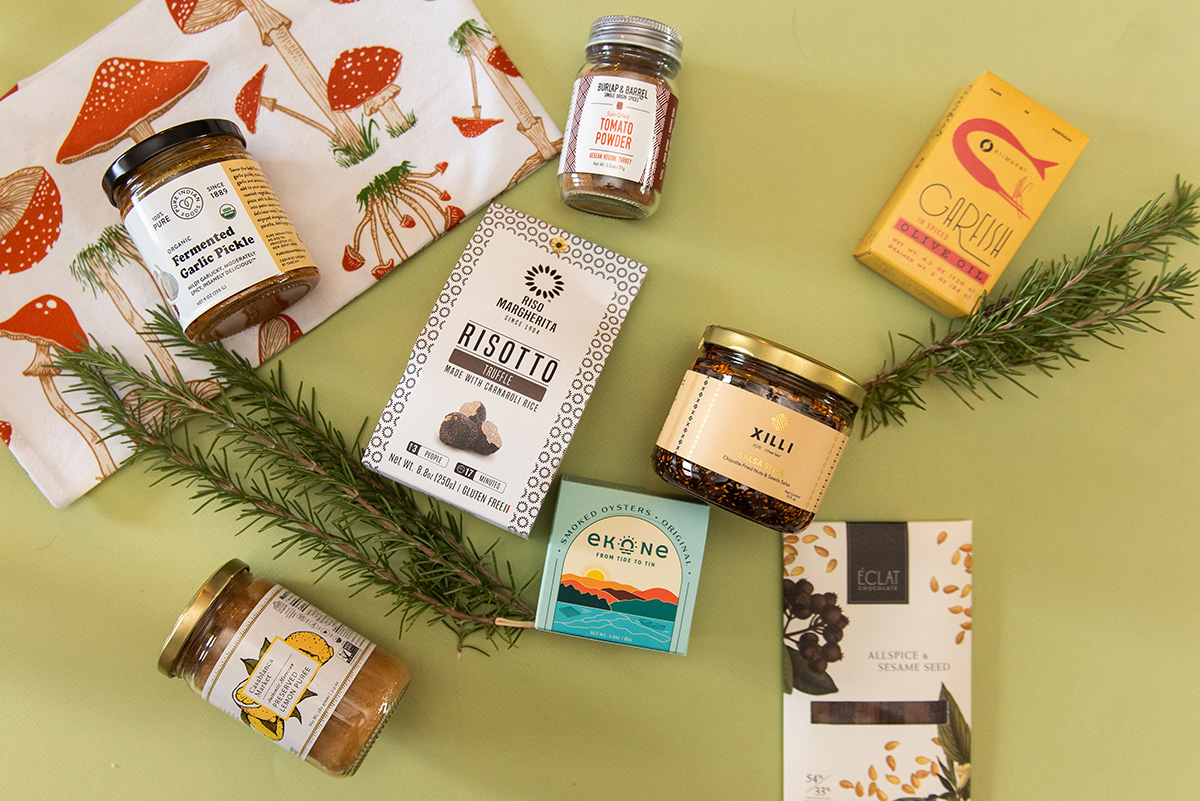
To give a touch of sweetness: The DC Landmark Chocolate Covered Oreo Holiday Cookies from Capital Candy Jar. Wrapped in a festive red bow, this box of nine cookies embraces love for Washington and the holiday season in one. Among the dark and milk chocolate covered cookies are images of the U.S. Capitol, the White House, the Lincoln Memorial, the Jefferson Memorial and festive hollies. The treat, packaged in a Hill East facility just a few blocks from the Capitol, is available for purchase online and at the DowntownDC Holiday Market. ($23.95)
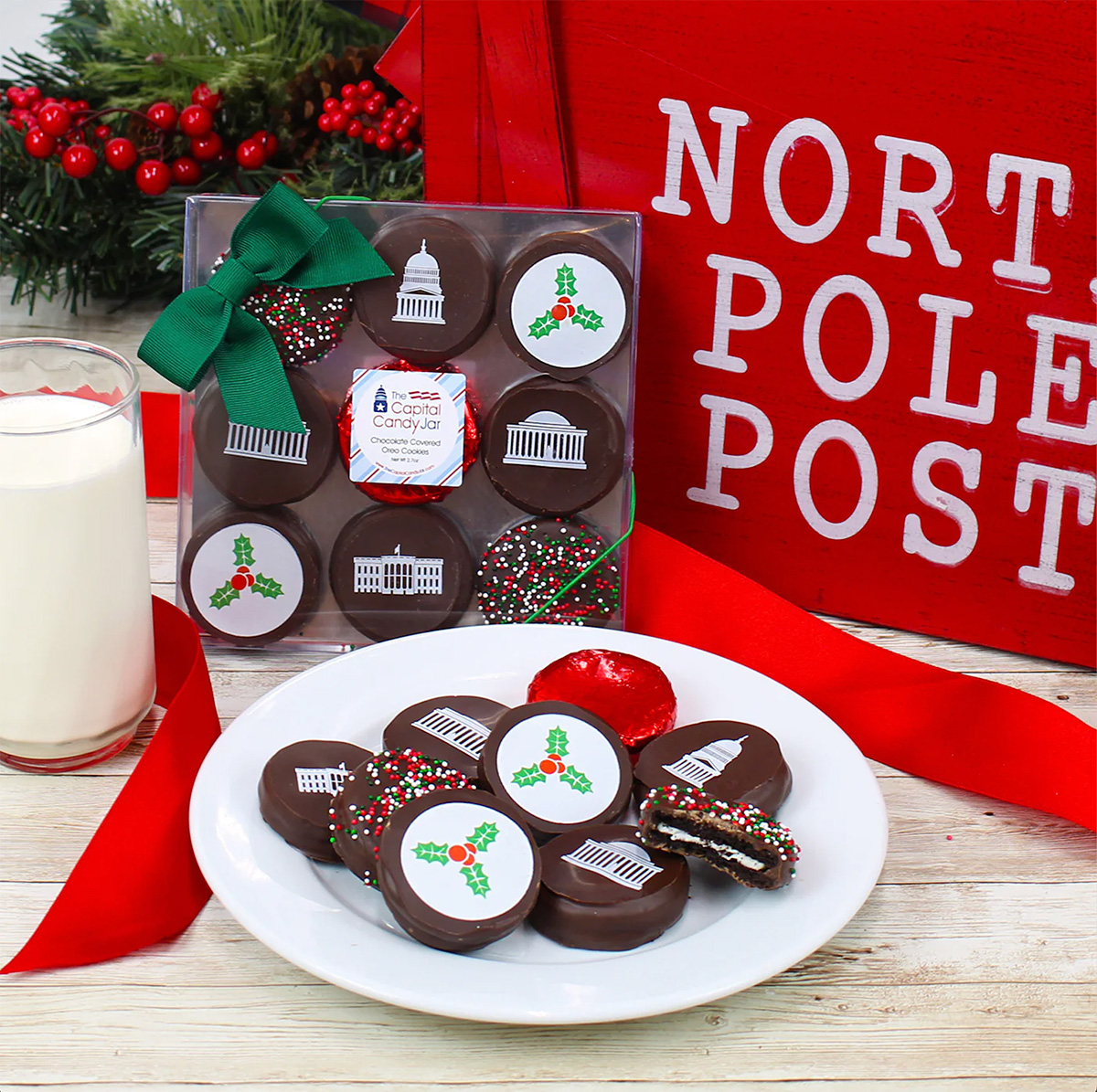

To celebrate queer gaming: Thirsty Sword Lesbians from Labyrinth Games & Puzzles. This roleplaying game embraces lesbian culture by unlocking a world of swords, romance, and battle. Ideal for group settings, the book presents a system of world building and character identities that are best brought to life by creative minds. Labyrinth, which has been a local Washington business for more than 15 years, celebrates non-digital fun through games and puzzles that connect the community. This gift is offered online and at Labyrinth’s Capitol Hill location. ($29.99)
To make a bold statement: The “Resist” T-shirt from Propper Topper. This locally screen-printed black tee features the Washington flag designed within a raised fist, symbolizing both Washington pride, and political resistance. The shirt is made exclusively by Propper Topper, a local Washington business that evolved from a hat shop to a gift store since opening in 1990. The tri-blend unisex shirt is available both for pickup at Propper Topper’s Cathedral Heights location and shipping via the online site. ($32)
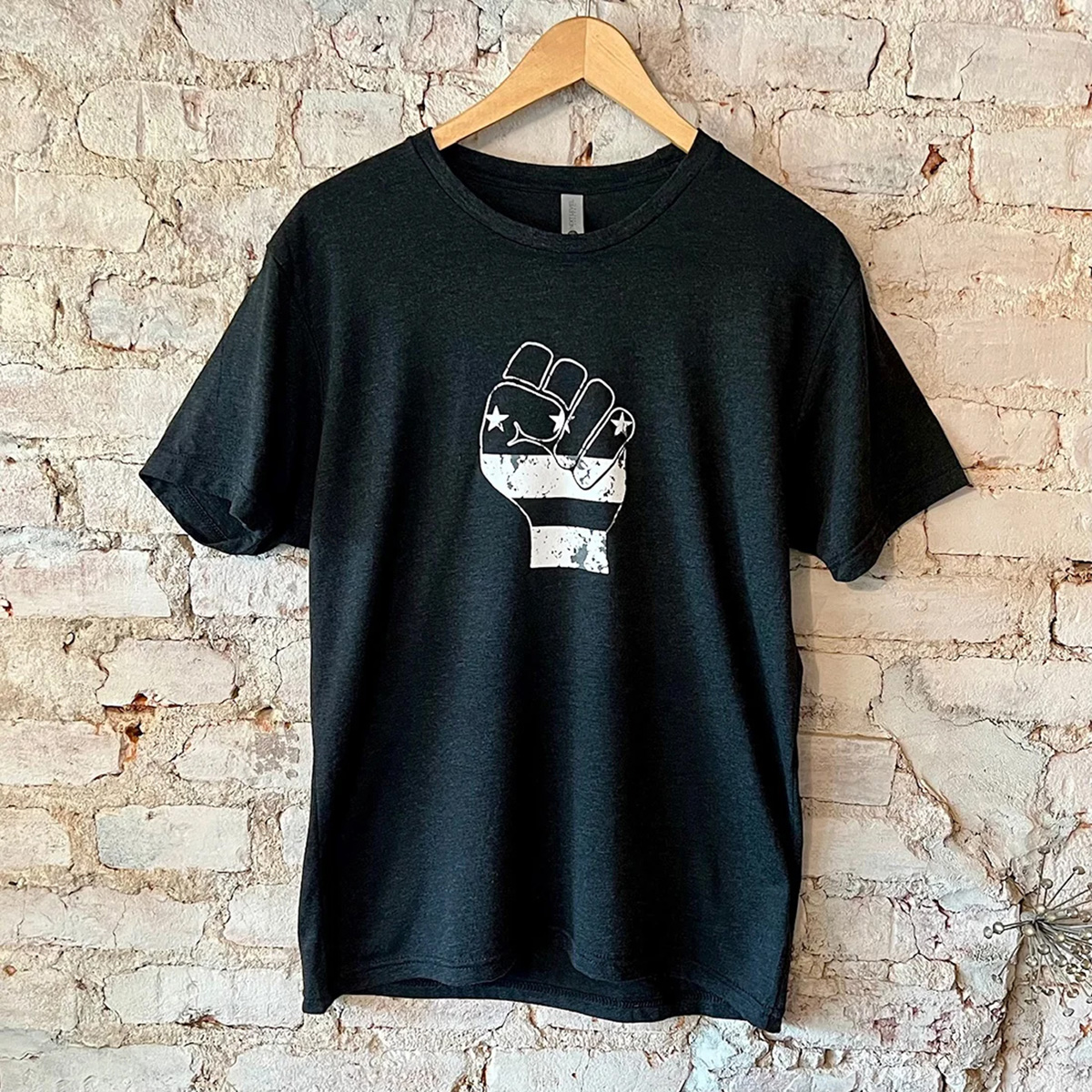
To keep it c(g)lassy: The Glass Ball earrings from Blue Moon Aquarius. Gifting can rarely go wrong when it comes to a new pair of earrings. The unique statement earrings — made of polymer clay, glass, and 18k gold plating over surgical steel — are hand cut, sanded and assembled in Washington, meaning each set is unique. Blue Moon Aquarius, a local brand, is known for its small batch jewelry and home decor designed with clay materials. Available in oxblood, hunter green, lavender, and bluestone color palettes, these earrings are available for purchase on Blue Moon Aquarius’ website and at the DowntownDC Holiday Market. ($48)
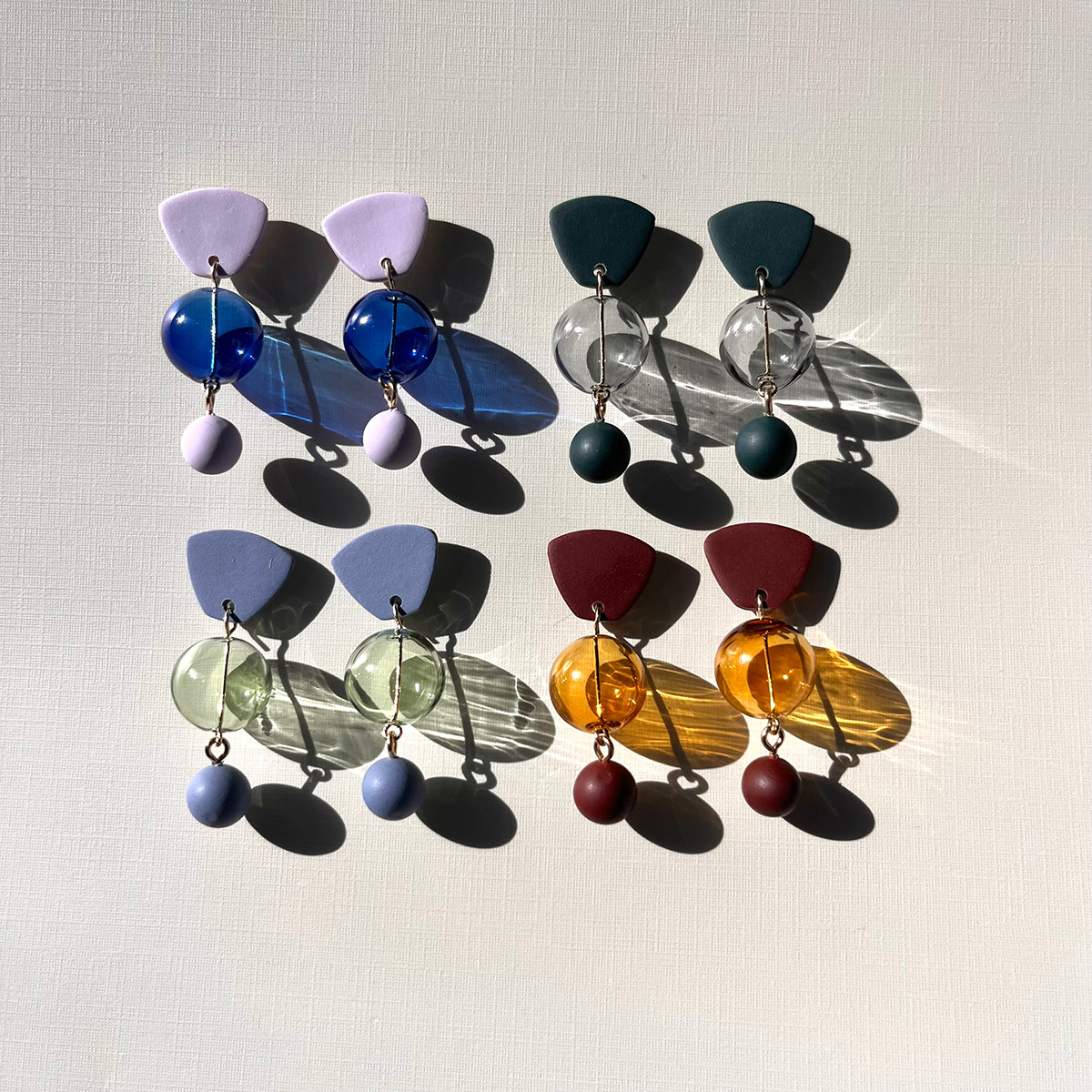
To elevate a holiday tea or charcuterie party: The Honey Flight: Tea Lover’s Selection from BannerBee. This local honey company presents the ideal gift to make cozying up with a cup of tea slightly more special. The Honey Flight contains three types of raw wildflower honey infused with fair trade Ugandan vanilla bean, chai spices, and locally sourced lemon thyme herb. The gift is also an opportunity to uplift a family company based in the Mid-Atlantic that offers all-natural, sustainable products. The flight is available online, at the DowntownDC Holiday Market or at the Arlington Courthouse and Dupont Farmers’ Markets. ($36)
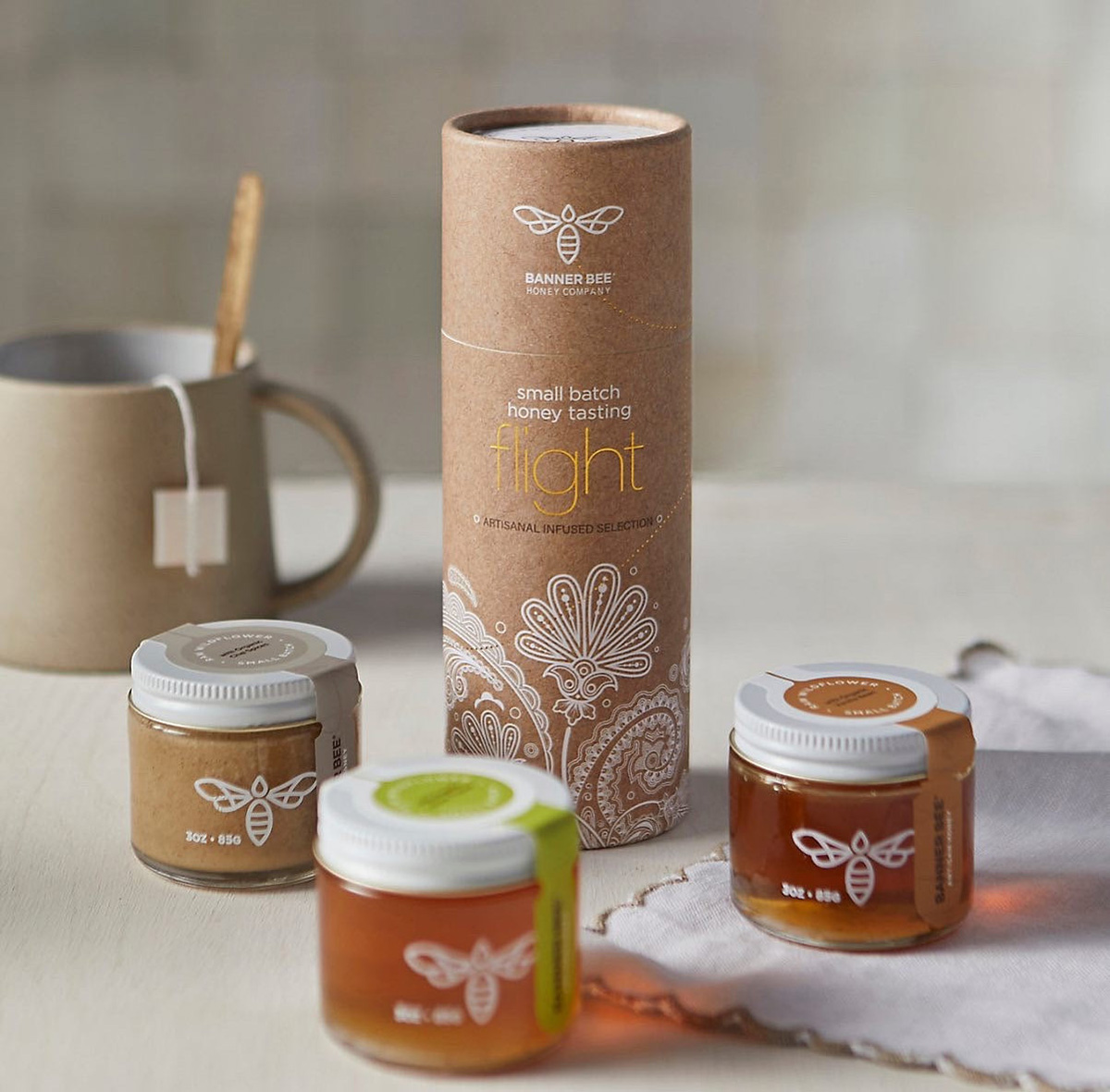
For Baltimore shoppers: If you’re in Charm City, don’t miss Balston Mercantile, opened by a gay couple in June. Their gorgeous shop in the Hampden neighborhood offers an array of unique, upscale finds, from barware and artwork to cookbooks and home decor and more. (849 W. 36th St.)
a&e features
Have yourself a merry John Waters Christmas
Annual holiday show returns to Alexandria and Baltimore
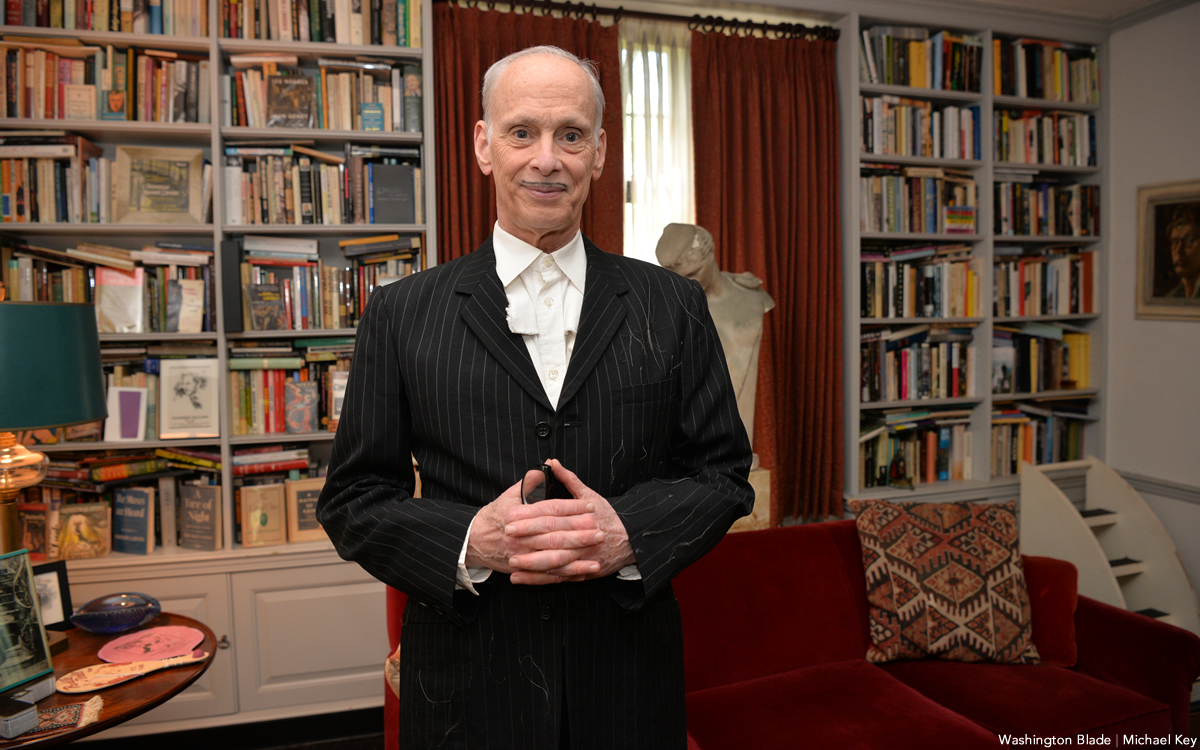
When it comes to iconic Christmas scenes in movies, none can top the tree-toppling tantrum thrown by cha-cha heels-deprived Dawn Davenport in John Waters’s fifth full-length feature “Female Trouble” from 1974. Therefore, it’s not surprising that Waters continues to make art out of Christmas, performing his spoken word Christmas tour in cities across the country. Waters has even more reason to celebrate with the release of his new red vinyl 7” single, a cover of Little Cindy’s “Happy Birthday Jesus (A Child’s Prayer)” on the A-side, and “A Pig Latin Visit From St. Nicholas” on the B-side. If you’re still looking for unique Christmas gifts, consider this record. As always, John was kind enough to make time for an interview in advance of his tour dates.
BLADE: John, in preparation for this interview with you, I went back and listened to Little Cindy’s original rendition of “Happy Birthday Jesus (A Child’s Prayer)” on your “A John Waters Christmas” CD.
JOHN WATERS: One thing I did, if you notice, I make the same stumble in my recording that she did in the original.
BLADE: It sounded to me like she got choked up.
WATERS: No, I think she just stumbles over a word, so I stumbled over the same word. It’s appropriation, insanely.
BLADE: Is this a song you first became aware of in your youth or when you were an adult?
WATERS: When I was doing the Christmas album, I had this friend named Larry Benicewicz. He was kind of my idea man with music. He knew every single old record. I would say to him, “Weird Christmas songs,” when we were doing a soundtrack, or a song about bears, or a song about this, and he would give me all these tapes. It was one of the ones he played for me. A lot of the songs I put in my movies and on my records, I did know as a kid. I did not know this one, but I immediately embraced it. I don’t think it’s campy. I think it really is spiritual in a weird way. My doing it makes it a novelty record. I am really for novelty records, and there aren’t any anymore. Why was there not a COVID novelty record? That’s insane. The dance “The Bug” that’s on the “Hairspray” soundtrack would be perfect for COVID.
BLADE: The thing that struck me was that for a Christmas song in the voice of a child, a kind of death pall hangs over it, with lines like, “If I was good you’d let me live with you” and “they nailed you to the cross, they wanted you to die.”
WATERS: All of it! When I see children at midnight mass kneeling in front of a nude man nailed to a cross, I feel like I’m at The Eagle! It is S&M, it’s creepy. I took the same cover (photo) from her record to parody and put my face on it. The same thing I did with The Singing Dogs last year when I covered (their version of) “Jingle Bells.” I’m really into novelty records. I love them and I’m trying to bring them back. I don’t expect anybody to ever play these records. Even The Singing Dogs one said on it, “Please do not play this record” [laughs]. And the flipside, the Pig Latin version, is almost impossible to listen to.
BLADE: I’m so glad you mentioned that. “A Pig Latin Visit From St. Nicholas” reminded me of the lost art of speaking in Pig Latin. I also recall watching the PBS series “Zoom” as an adolescent and learning to speak “ubbi dubbi,” a distant relative of Pig Latin. Do you think that the time is right for a Pig Latin or ubbi dubbi revival?
WATERS: Here’s the thing, I never could pick up any language, except Pig Latin. I’ve been in every foreign country. Foreign countries have given me money to learn to speak the language. I can never do it! But Pig Latin…my parents and other parents in the ‘50s spoke Pig Latin so kids couldn’t understand what they were saying. Then my mother taught it to me, and I used it. The hardest take to shoot in “Pink Flamingos” was not eating the dog shit. It was when the cast skipped, in one take, saying “E-way, are-yay e-they ilthiest-fay eople-pay in-hay e-they ole-hay ide-way orld-way.” We’re the filthiest people in the whole wide world in Pig Latin. We had to do so many takes so they could do it once without screwing it up. In “Polyester,” Edith (Massey) answers the phone, “ello-hay.” I did a photo piece where it was all subtitled in Pig Latin. Like “osebud-Ray” (from “Citizen Kane”) or in “Streetcar,” “ella-Stay!” [Laughs] All the iconic dialogue translated into Pig Latin. My assistant who helped me do it, had never heard of Pig Latin. She really got good at it because she lived in many foreign countries and can pick up languages. But it’s not that easy to do it correctly and read it. Your computer will translate into Pig Latin.
BLADE: AI understands Pig Latin?
WATERS: I guess that’s AI. It wasn’t 100% right, but it was close. I can speak it if I look at it, but just do a bit at a time. It was a challenge that no one would possibly care about or want to do.
BLADE: I think you pulled it off very well.
WATERS: If you want people to leave on Christmas morning, you put it on. That’s how you get your guests to leave. It’s time to go.
BLADE: Ood-gay i-bay! How did your relationship with record label Sub Pop, which released 2021, 2022, 2024, and new 2025 holiday singles, come about?
WATERS: I believe the first thing I did for them was “Prayer to Pasolini.” They came to me through Ian Brennan. He’s won a couple Grammys for World Music, but he is also is one of my agents who does the Christmas tour and a lot of my shows, anything with music. He helped me arrange each one of the songs. He had a relationship with Sub Pop. It was perfect. My friends in Baltimore, (the band) Beach House, have had huge success.
BLADE: That’s right, they’re on Sub Pop!
WATERS: Yes! I’m happy to be on it. I’ve even been to the warehouse and posed for pictures like Jackie Suzanne used to do.
BLADE: Is there any chance that “A John Waters Christmas” might be reissued on vinyl by Sub Pop?
WATERS: No. It’s such a nightmare to get the rights and to renew them. You have to find the publisher and the writer, and they usually hate each other. It doesn’t matter if it’s obscure or famous, it’s hard to get. You have to make the deal. The singer doesn’t get anything unless they play it on the radio. It would be so complicated legally, and there would be such a [laughs] tiny audience for it. I hope it will come out again. The same thing with the one for Valentine’s Day. I had two of them that did quite well when they came out; “A Date With John Waters and “A John Waters Christmas.” The “John Waters Christmas” album is still the soundtrack that plays whenever I’m doing my spoken word Christmas show as people are entering the theater.
BLADE: Aside from your annual Christmas show tour, what else do you do for the holidays now, and are there any traditions that you’ve carried over from your family?
WATERS: Certainly! I have two sisters, my brother’s widow, and me, so there are four and we take turns each year to have the Christmas dinner. Mine was last year. An entire sit-down dinner. Mom’s China, the silverware, the entire full dinner. It’s pretty traditional. I don’t have a Christmas tree, but I do decorate the electric chair from “Female Trouble.” That is a tradition in my family. We do have Christmas decorations, but they’re usually weird ones that fans sent me. I have one with Divine knocking over the Christmas tree, and the Christmas tree lights up, all sorts of amazing things. There is definitely a tradition here that might be a little altered, but it is definitely a tradition. I used to have a giant party every year, but COVID ended that. I still wouldn’t want 200 people in my house breathing right now.
BLADE: I was looking at your tour schedule and wondered if there are any new cities in which you’ve never performed the John Waters Christmas show that have been added to this year’s schedule?
WATERS: I don’t think there’s a city in America in which I haven’t done one show! The only places I haven’t been to are Hawaii and Alaska. I could do it there, but it’s too long on a tour. I can’t think of a city I haven’t played in in America over the last 50 years. The Christmas show is completely different every year. It doesn’t matter if you saw it last year.

Some gifts scream practical, others whisper luxury, and a few flat-out blur the lines. From cocoa that feels ceremonial to a cologne that linger like a suggestive smirk, this year’s ultimate gift picks prove that thoughtful (and occasionally naughty) presents don’t have to be prosaic. Welcome to your holiday cheat sheet for festive tangibles that get noticed, remembered, and maybe even result in a peck of gratitude planted under the mistletoe. Consensually, of course.
Amber Glass Champagne Flutes
Pop the champs – but make it vintage. These tulip-shaped stunners in amber-tinted glass bring all the Gatsby vibes without the Jazz-age drama. Whether you’re toasting a milestone or celebrating a Tuesday, their seven-ounce capacities and hand-wash-only care make ‘em as practical as they are pretty. Pair with a thoughtful bottle of bubs and gift with a glittering wink. $18, NantucketLooms.com
Disaster Playbook by Here Comes the Apocalypse
Because the end of the world shouldn’t be a solo act, this spiral-bound guide is your step-by-step roadmap to surviving and thriving when everything else goes sideways, which might be sooner than you think. Packed with checklists, drills, and a healthy dose of humor, it’s like a survival manual written by your most prepared (and slightly snarky) friend. Whether you’re prepping for a zombie apocalypse or, more realistically, REVOLUTION!, this playbook’s got your back. $40, HereComesTheApocalypse.com
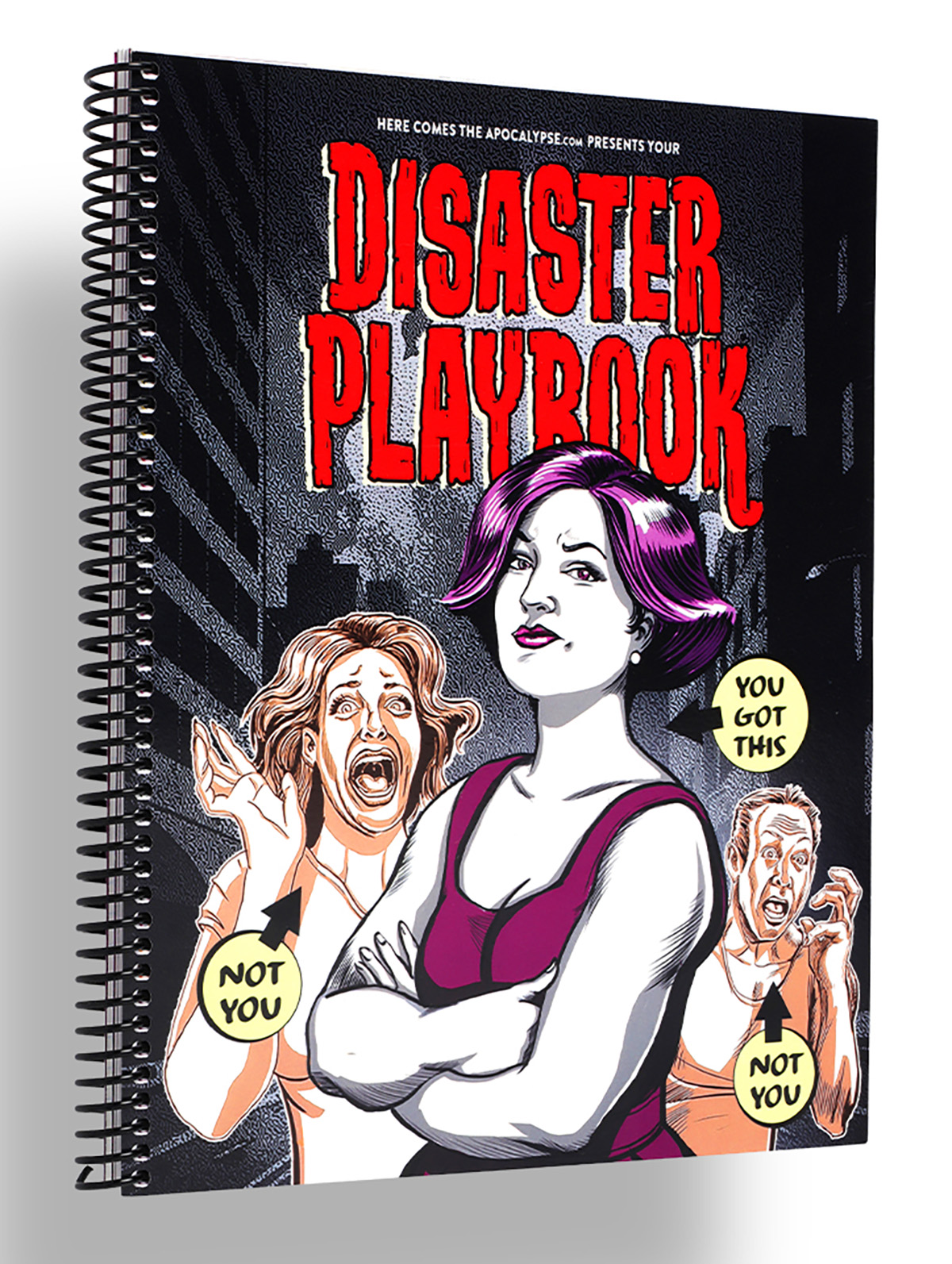
Wickless Vulva Candles
Bold, luxurious, and completely flame-free, CTOAN’s wickless candles melt from beneath on a warmer, releasing subtle, sophisticated fragrances, like sandalwood or lavender. The vulva-shaped wax adds a playful, provocative element to any space –perfect for a bedroom, living room, or anywhere you want elegance with an edge. A gift that celebrates form, intimacy and self-expression, no fire required. $39, CTOANCO.com
Villeroy & Boch Royal Classic Christmas Collection
Every meal is a mini celebration – with whimsy at every place setting – in Villeroy & Boch’s Royal Classic festive dinnerware collection that hits all the right notes. Made from premium German porcelain, it features nostalgic little toys, nutcrackers, and rocking horses in delicate relief, giving your holiday spread a playful but refined twist. Dishwasher- and microwave-safe, it’s luxe without the fuss. Gift a piece to a special someone, or start a collection they’ll use (and show off) for years to come. $22-$363, Villeroy-Boch.com
Greenworks Electric Lawnmower
You a ’hood queen who considers lawn care performance art – or just wants to rule the cul-de-sac in quiet, emission-free glory? Greenworks’ zero-turn electric mower has the muscle of a 24-horsepower gas engine but none of the fumes, drama or maintenance. Six 60V batteries and a 42-inch deck mean you can mow up to two-and-a-half acres on a single charge – then plug in, recharge, and ride again. It’s whisper-quiet, slope-ready, and smooth enough to make you wonder why you ever pushed anything besides your queer agenda. The perfect gift for the homeowner who loves sustainability, symmetry, and showing off their freshly striped yard like that fresh fade you get on Fridays. $5,000, GreenworksTools.com
Molekule Air Purifier
For the friend who treats their space like a sanctuary (or just can’t stand sneezes), the Molekule Air Pro is magic in motion. Covering up to 1,000 square feet, it doesn’t just capture allergens, VOCs, and smoke – it destroys them, leaving your air feeling luxury-clean. FDA-cleared as a Class II medical device, it’s serious science disguised as modern design. Gift it to your city-dwelling, pet-loving, candle-burning friend who likes their living room as pristine as their Instagram feed. $1,015, Molekule.com

Cipriani Prosecco Gift Set
Effervescent with stone-fruit sweetness and a touch of Italian flair, the Cipriani Bellini & Prosecco gift set brings brunch-level glamour to any day of the week. The Bellini blends rich white-peach purée with sparkling wine, while the dry ’secco keeps things crisp and celebratory. Pop a bottle, pour a flute, and suddenly winter weeknights feel like a party – even with your pants off. $36, TotalWine.com
Woo(e)d Cologne
British GQ recently crowned Woo(e)d by ALTAIA the “Best Date Night Fragrance,” and honestly, they nailed it. Confident without being cocky – smoky gaïac and Atlas cedarwood grounds the room while supple leather and spicy cardamom do all the flirting – it’s a scent that lingers like good conversation and soft candlelight. Gift it to the one who always turns heads – or keep it for yourself and let them come to (and then on) you. $255, BeautyHabit.com

Lococo Cocoa Kit
Keep the run-of-the-mill mugs in the cabinet this Christmas and pull out Lococo’s handcrafted Oaxacan versions that demand you slow down and sip like it matters. Paired with a wooden scoop, rechargeable frother, and Lococo’s signature spice hot-chocolate blend (vegan, gluten-free, with adaptogenic mushrooms), this holiday kit turns Mexi-cocoa into a mini ritual you’ll look forward to. Perfect for anyone who loves a little indulgence with a side of ¡A huevo! energy.
Manta Sleep Mask
Total blackout, zero pressure on the eyes, and Bluetooth speakers built right into the straps, this ain’t your mama’s sleep mask — but it could be. The Manta SOUND sleep mask features C-shaped eye cups that block every hint of light while ultra-thin speakers deliver your favorite white noise, meditation, or late-night playlist straight to your ears. With 24-hour battery life, breathable fabric, and easy-to-adjust sound, it turns any bed (or airplane seat) into a five-star sleep suite. Perfect for anyone who treats shut-eye like an art form (or just wants to escape their roommate’s late-night bingin’ and/or bangin’). $159, MantaSleep.com

Shacklelock Necklace
Turn the industrial-chic vibe of a shackle into a sleek statement. Mi Tesoro’s platinum-plated stainless-steel necklace sits on an 18-inch wheat chain, featuring a shackle-style latch pendant that’s waterproof, tarnish-free, and totally fuss-les. Beyond style, it nods to a classic gesture in the queer leather community: replacing a traditional Master lock with something elegant to quietly signal belonging to someone special. Wear it solo for a minimalist edge or layer it like you mean it; either way this piece locks in both your look and your intentions. $90, MiTesoroJewelry.com
Parkside Flask Mojave Edition
Wine nights get a desert glow-up with Parkside’s limited-edition 750-milliliter all-in-one flask draped in sun-washed bronze and badland hues like sage, sand, and terracotta – with magnetic stemless tumblers that snap on for effortless shareability. It keeps your vino chilled for 24 hours, pours without drips (no tears for spilled rosé, please), and even lets you laser-engrave your own mantra or inside joke. Perfect for picnics, surprise rooftop clinks, or gifting to your favorite wine (or desert) rat. $149, HighCampFlasks.com

Mikey Rox is an award-winning journalist and LGBT lifestyle expert whose work has published in more than 100 outlets across the world. Connect with him on Instagram @mikeyroxtravels.





